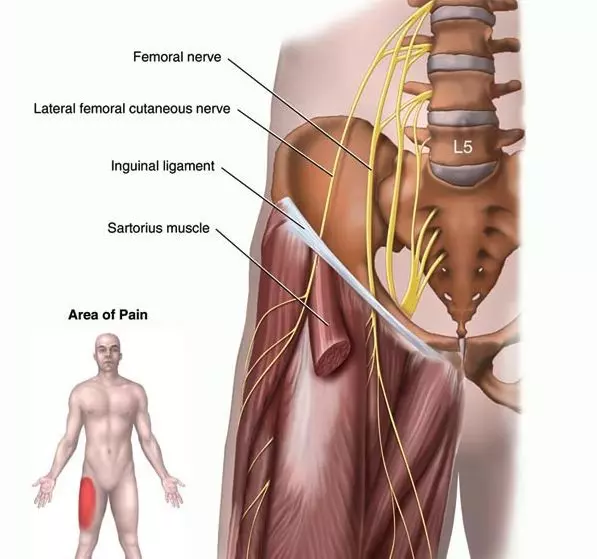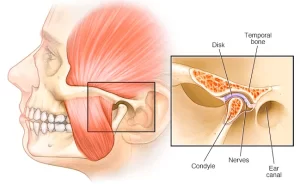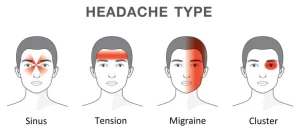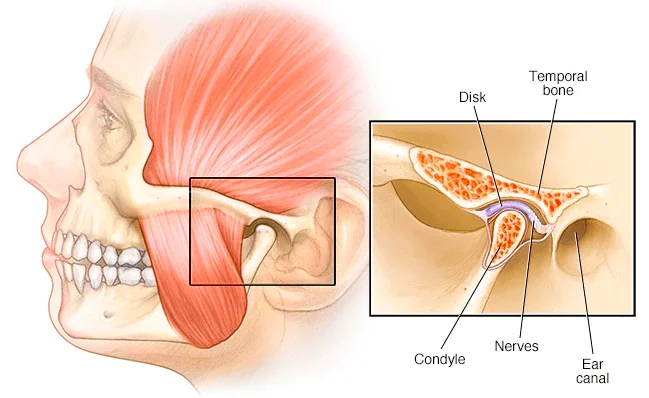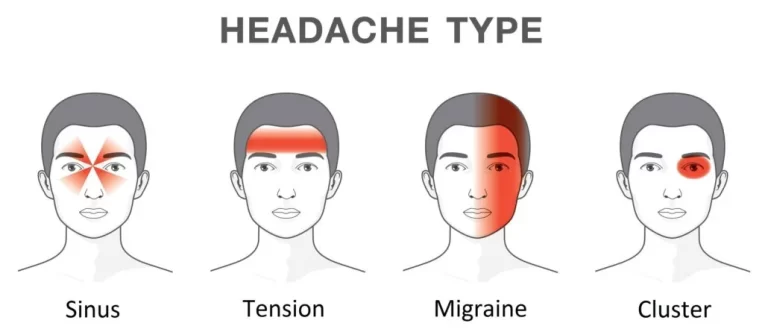What is Meralgia Paresthetica?
Meralgia Paresthetica or known as Bernhardt-Roth Syndrome, is a neurological condition characterised by tingling, numbness, and burning pain in the outer thigh.
What causes Meralgia Paresthetica?
Meralgia Paresthetica occurs when the Lateral Femoral Cutaneous Nerve (LFCN) which supplies sensation to the surface of the outer thigh becomes compressed or pinched. The Lateral Femoral Cutaneous Nerve (LFCN) is purely a sensory nerve and does not affect the ability to use the leg muscles. In most people, this nerve passes through the groin to the upper thigh without trouble. However in Meralgia Paresthetica, the Lateral Femoral Cutaneous Nerve (LFCN) becomes trapped often under the inguinal ligament, which runs along the groin from your abdomen to the upper thigh.
Common causes of this compression include any condition that increases pressure on the groin including tight clothing, obesity, weight gain, wearing a heavy tool belt, pregnancy, or scar tissue near the inguinal ligament due to injury or past surgery. Nerve injury, which can be due to Diabetes or injury after a motor vehicle accident also can cause Meralgia Paresthetica.
Meralgia Paresthetica Treatment
Physical therapy can help with Meralgia Paresthetica. As Meralgia Paresthetica is caused by a disorder in the hip or pelvis, treatment program will address those areas with the goal of eliminating compression on the nerve. Manual therapy will be done to gently move the muscles and joints to improve their motion and strength in the back or hip. Pain-relief techniques will also be implemented to decrease the leg’s extreme sensitivity. Personalised exercises as well as lifestyle recommendations will then be prescribed to decrease tension and help restore normal motion in the back, hip, and leg. If in doubt, please seek professional advice.
Check out our popular articles: Diastasis Recti, Tight Back Muscles, Irritable Bowel Syndrome (IBS), Temporomandibular Joint (TMJ) Dysfunction, Tennis Elbow, Wrist Tendon Injury, Sciatica, Whiplash, Hernia, Herniated Disc (Slipped Disc).
